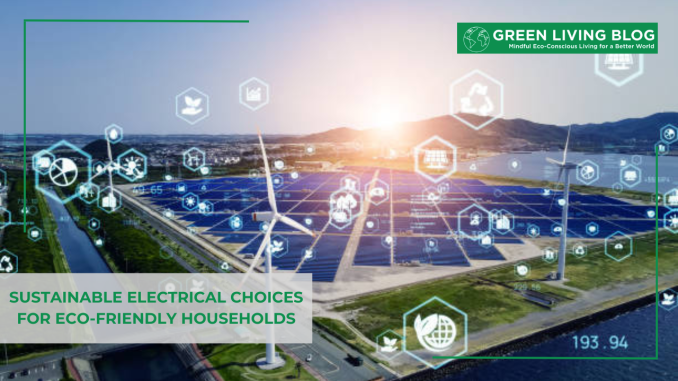
So you’re already using metal straws, reusable shopping bags, and maybe even a hybrid car. But have you thought about the electricity that powers the lights in your home, the appliances you use, and the devices you’re charging up right now?
Imagine if every watt of electricity you used helped cool down the planet, instead of heating it up. Welcome to Sustainable Electricity!
The transformation isn’t as difficult as it seems. In fact, various resources, like www.thelocalelectrician.com.au, can get you started on this green revolution right away. Unlock a future where eco-consciousness merges with technology and comfort. Now explore how you can make this possible in your household.
Why Choose Sustainable Electricity?
Sustainable electricity utilises renewable sources like wind, sun, tides and even plants to generate power. Unlike fossil fuel-based electricity that releases incredible amounts of carbon dioxide into the atmosphere, sustainable sources create little to no emissions.
Conventional utility costs are also trendsetters for inflation. On the other hand, once the initial investment into renewable energy systems has been made, you technically have a free source of energy that can last for decades with little maintenance. For example, Solar Photovoltaics (PV) technology is proof of this durability; NASA has been using these for space missions since the 1950s!
Switching to sustainable electricity not only helps in lowering your carbon footprint but also contributes extensively to decentralising power production- contributing to energy security and stabilisation of the supply chain.
This transition further enhances employment opportunities and promotes technological advances while ensuring energy access regardless of geography.
Assessing Your Electrical Needs
To start with, you need to audit your house’s energy consumption. Calculate how much electricity each appliance consumes and note which ones can switch to energy-efficient alternatives.
You might realise that replacing old devices or introducing minor changes in power usage habits can significantly lower your consumption. This lessened demand makes it easier to meet your needs via renewable sources.
Remember, every power-saving effort counts and plays a significant role in shaping the planet’s future. The U.S. Department of Energy’s (DOE) comprehensive guides provide loads of information on assessing and reducing power consumption.
End the audit with a calculation of your house’s total energy consumption, which is crucial for planning your transition to renewables such as Solar Panels and Wind Energy Installations.
Solar Panels for Home Use
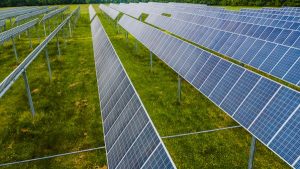
Solar panels convert sunlight directly into electricity through the photovoltaic effect. They are at the forefront of the green energy revolution because once installed, these panels can provide power consistently for 25-35 years requiring little maintenance.
Notably, even on cloudy days or during winter months, correctly installed solar panels can generate enough power for home use. Moreover, surplus electricity produced on sunny days can be stored in batteries or fed back to the grid.
Panel installations might seem costly initially, but considering their lifespan and potential energy savings, solar systems often pay for themselves within 7-10 years.
Coupled with incentives like tax credits and rebates provided by governmental agencies encouraging sustainable energy use, solar panels definitely make a desirable choice for households looking to go green.
Wind Energy Installations
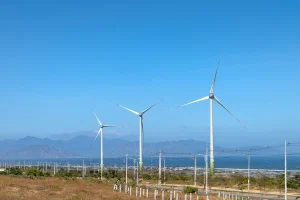
For households located in windy regions, mini wind turbines can help harvest this abundant source of clean energy. Small wind systems work best in areas where the average wind speed is over 12 miles per hour.
They might not generate as much electricity as solar panels, but it’s noteworthy that wind turbines can produce power even when the sun isn’t shining- adding a layer of resilience to your home’s power system.
While wind turbines demand more maintenance compared to solar panels, modern technologies have made them quieter and more efficient. Regional agencies also offer incentives for wind systems similar to solar installations.
With proper planning and installation by pros such as The Local Electrician, your mini wind farm can start reducing your reliance on grid electricity and make significant strides towards your eco-friendly goal.
Hybrid System: Wind and Solar
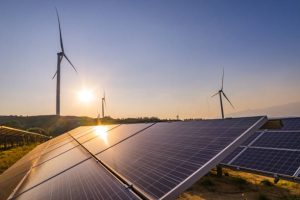
If you can’t decide between wind and solar, or if you want to maximise your clean energy production, then why not opt for a hybrid system? A combination of both solar panels and wind turbines ensures that you generate sustainable electricity throughout the day, regardless of the weather condition.
Besides being a reliable power source, these hybrid systems use fewer batteries to store energy than standalone systems. This further reduces overall cost and maintenance while bringing in an environment-friendly component of reduced waste.
The beauty of hybrid systems is redundancy; if one system fails (which is rare), the other can still provide power. This reliability factor is especially critical for remote homes where power supply from the grid can be unpredictable.
By approaching sustainable electric choices resourcefully you’re not just empowering your own home with clean energy but also contributing immensely towards a healthier planet for generations to come.
Energy Efficient Home Appliances
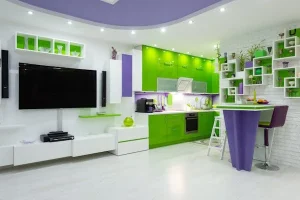
Investing in energy-efficient appliances plays a significant role in reducing your household electricity consumption. Today’s market is buzzing with a variety of devices branded with the ENERGY STAR. This symbol signifies that these products meet the standards set by the Environmental Protection Agency (EPA) for energy efficiency.
These appliances – ranging from air conditioners to refrigerators, washing machines, and dishwashers – are designed to use less electricity compared to older or conventional models. For instance, an ENERGY STAR-certified refrigerator can save you around $30-$70 per year on utility bills as it uses at least 15% less energy.
Moreover, when purchasing these appliances, always consider their size and usage. A larger appliance may consume more power, but if it’s used efficiently – like a full load of washing compared to multiple smaller loads – it could ultimately use less energy.
LED Lighting: An Easy Switch
An immediate action you can enact today is replacing your incandescent or CFL light bulbs with Light Emitting Diodes (LEDs). LEDs are more energy-efficient as they provide the same amount of light using significantly less power. For instance, a 12-watt LED light can produce the same brightness as a 60-watt incandescent bulb.
Besides energy efficiency, LED lights have an impressive longevity that surpasses their conventional counterparts. On average, LEDs last up to 25 times longer than incandescent bulbs and around three times longer than CFLs. This not only leads to lower electricity bills but also reduces the frequency of bulb replacements.
LEDs are versatile and come in multiple colours, making them ideal for decorative purposes. Additionally, they are very durable and can operate under cold temperatures and lower voltage without a compromise in the light quality.
Implementing LED lighting does not involve major rewiring or renovation, making it one of the simplest ways to transition towards a more sustainable home. When coupled with solar, it becomes an even more efficient lighting method.
A Greener Conclusion
The switch to sustainable electricity is undeniably an essential step towards eco-friendly households. By adopting energy-efficient appliances and lighting, incorporating smart technology, and harnessing renewables with either off-grid or grid-tied systems guided by beneficial government policies – you can contribute to greener living.
These proactive choices not only benefit the environment but also provide a sense of fulfilment, knowing you’re doing your part for a healthier planet. Remember, every small step towards sustainability can make a big difference.
![]()
Author Profile
- Passionate content creator, contributor, freelance writer and content marketing allrounder.
Latest entries
 Green LivingApril 17, 20254 Eco-Friendly Habits to Pair With Your Herbal Tea Ritual
Green LivingApril 17, 20254 Eco-Friendly Habits to Pair With Your Herbal Tea Ritual Best practicesApril 12, 2025Top 6 Eco-Friendly Choices for Sustainable Living in Your Everyday Life
Best practicesApril 12, 2025Top 6 Eco-Friendly Choices for Sustainable Living in Your Everyday Life BusinessMarch 31, 2025How to furnish your Office with sustainable Cardboard Furniture
BusinessMarch 31, 2025How to furnish your Office with sustainable Cardboard Furniture Best practicesMarch 21, 202511 Practical Ways to Limit Your Exposure to Microplastic Pollution
Best practicesMarch 21, 202511 Practical Ways to Limit Your Exposure to Microplastic Pollution






Leave a Reply
You must be logged in to post a comment.